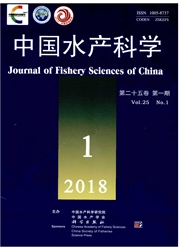

 中文摘要:
中文摘要:
为了量化人类活动对海洋渔业资源可持续利用干扰的程度,本研究基于渔业生态足迹的算法,对江苏近海1978―2014年的生态足迹进行计算,研究江苏省的渔业生态现状。在此基础上,依据系统动力学(System Dynamics,SD)原理,嵌入营养动态模式,构建了江苏近海海域渔业生态足迹SD模型。利用2006―2014年的历史渔业数据验证该模型是可行的,并运用模型预测了不同捕捞强度下江苏近海渔业生态系统的发展模式。结果表明:1978―2014年江苏近海渔业生态足迹由2.41×10^6 hm2增长到6.61×10^6 hm2,平均值为5.38×10^6 hm2,已经高于生态承载力3.45×10^6 hm2,约为承载力的1.5倍,表明江苏近海海域渔业生态资源已处于不可持续的发展状态中;根据模型仿真分析,如果进一步加强捕捞强度,渔业生态足迹会急剧下降,最终趋于0值,且随着加强程度的增大,生态足迹下降越快,趋于0值的时间也越短;根据海洋渔获量阈值的计算结果,需要在目前捕捞强度基础上降低约50%,渔业生态足迹才能回升,生态赤字也能平稳降低,从而防止渔业生态系统崩溃。该研究结果可为江苏省可持续发展决策提供有益参考,也可用于江苏近海海域生态效应的预警。
 英文摘要:
英文摘要:
Human activity has put great pressure on the sustainable utilization of fishery resources. In order to quantify human activities based on the degree of interference, a model of the marine ecological footprint was calculated in order to understand the condition of Jiangsu coastal areas from 1978 to 2014. The system dynamics approach used a dynamic nutrition model and marine ecological footprint (MEF) analysis to build a system dynamics model of the marine ecological footprint of Jiangsu coastal areas. It is feasible to verify the model by way of historical fisheries data from 2006 to 2014, simulating the ecosystem development of Jiangsu coastal waters from 2006 to 2022 under different fishing intensities. The simulation results show that from 1978 to 2014, the marine ecological footprint of Jiangsu coastal waters increased from 2.41 × 10^6 hm2 to 6.61× 10^6 hm2, with a mean value of 5.38× 10^6 hm2, which is higher than the ecological carrying capacity of 3.45× 10^6 hm2, by approximately 1.5 times as much. This means that development in Jiangsu coastal waters has been at an unsustainable level according to the model simulation analysis; and assuming that the fishing intensity will only strengthen, the marine ecological footprint will fall sharply, and eventually to a zero value. The footprint drops faster and the time of tending to a zero value becomes shorter with increasing development. Based on the calculation of threshold catch, we need to reduce the fishing intensity by 50%, from now forward, to allow the fishery biomass to bounce back with smooth reductions in the ecological deficit, which might prevent a collapse in the fishery ecosystem. The research results are a worthwhile reference for making decisions on sustainable development in Jiangsu Province, and especially for forecasting ecological effects along the Jiangsu coast.
 同期刊论文项目
同期刊论文项目
 同项目期刊论文
同项目期刊论文
 期刊信息
期刊信息
